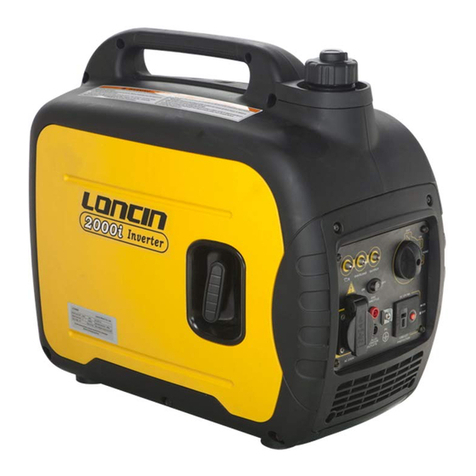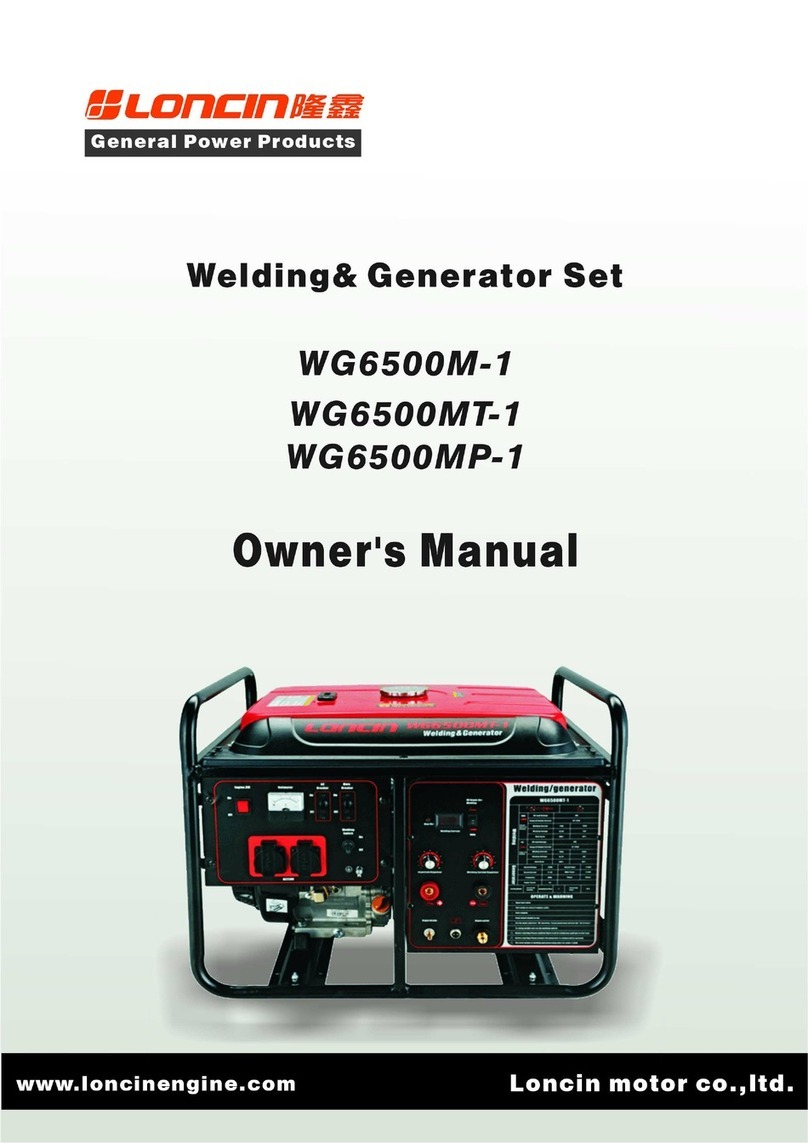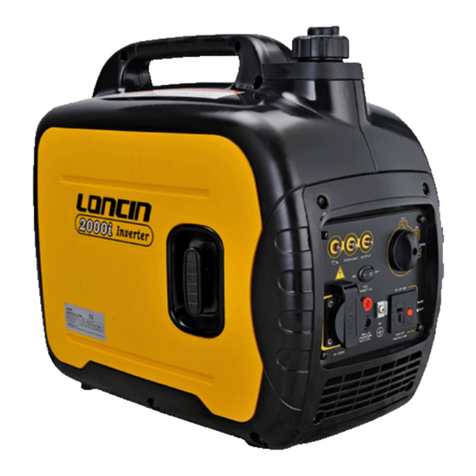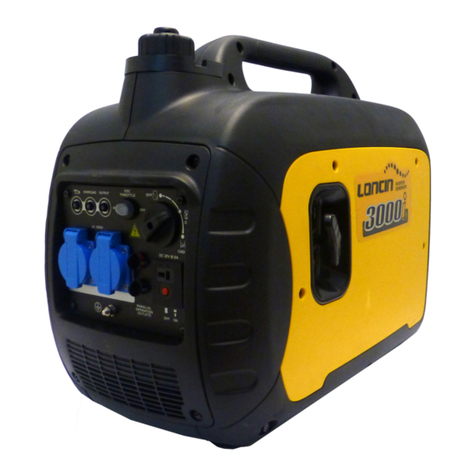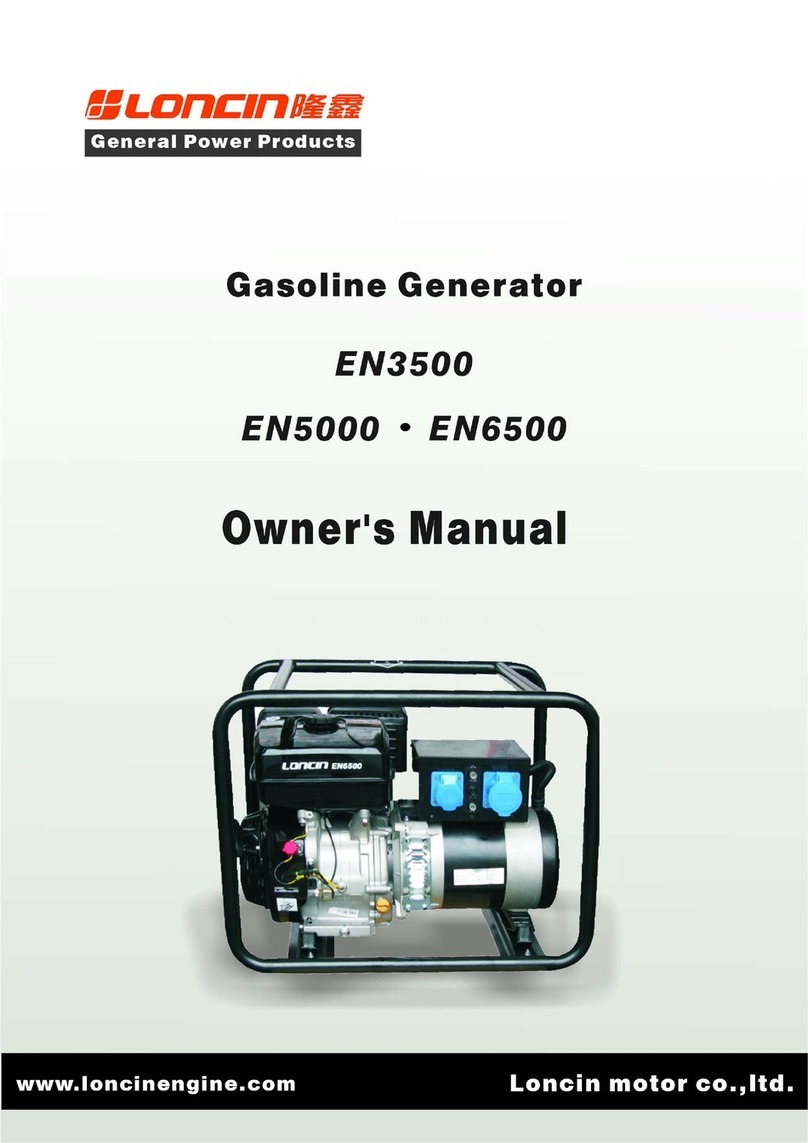
SAFETY PRECAUTIONS
Thoroughly read the OPERATOR’S MANUAL
before operating the generator set. Safe
operation and top performance can only be
attained when equipment is operated and
maintained properly.
The following symbols, found throughout this
manual, alert you to potentially dangerous
conditions to operators, service personnel and
equipment.
This symbol alerts you to an
immediate hazard that will result in severe
personal injury or death.
This symbol alerts you to a
hazard or unsafe practice that can result in
severe personal injury or death.
This symbol alerts you to a
hazard or unsafe practice that can result in
personal injury or damage to equipment or
property.
Electricity, fuel, exhaust, moving parts and
batteries present hazards against which
precautions must to taken to prevent severe
personal injury or death.
Exhaust Gas Is Deadly
•Operate the generator set outdoors only.
Stay away from the exhaust outlet.
•Make sure generator set exhaust will not
enter windows, doors, vents or air intakes of
adjacent buildings, vehicles or boats.
•Never use the generator set inside a
home, garage, crawl space, barn, shed,
cabin, boat, boat house, rv or tent, or in a
con¬fined outdoor space such as an alley,
ditch, parking garage or courtyard, or in any
other space where exhaust can accumulate.
note that hazardous carbon monoxide
levels from engine exhaust can accumulate
indoors even when all windows and doors
are open and fans are running.
Gasoline is Flammable / Explosive
•Refuel the generator set outdoors only.
•Static electric sparks caused by fuel flowing
through a service station pump nozzle can
ignite gasoline. Never fill the generator set
with a service station pump nozzle. Instead,
fill a safety tank sitting on the ground and
then slowly transfer fuel to the generator set
from the safety tank.
•Do not fill fuel tanks while the engine is run-
ning. A hot engine can ignite the fuel.
•To prevent fire due to fuel leakage, always
close the fuel valve and let the generator set
cool before transporting it or storing it in a
confined space.
•Do not smoke or allow an open flame near
the generator set. Keep flames, sparks,
electrical switches, pilot lights, electrical arcs,
arc-producing equipment and all other
sources of ignition well away.
Generator Voltage is Deadly
•Do not connect the generator set directly to
any building electrical system. Back-feed
could cause electrocution of utility line
workers and damage to equipment. An
approved switching device must be used to
prevent interconnections. A trained and
experienced electrician must make electrical
connections when the generator set is used
for emergency power.
•Make sure clothing, shoes and skin are dry
when handling electrical equipment.
• Never operate the generator set in rain or
snow or when it is sitting on wet ground.
Moving Parts Can Cause Severe
Personal Injury or Death
•Before performing any maintenance on the
generator set, disconnect the spark plug wire
and the negative (–) cable of the battery to
prevent accidental starting.
• Always keep hands away from moving parts.
•Do not wear loose clothing or jewelry while
servicing the generator set. Loose clothing
and jewelry can become caught in moving
parts. Jewelry can short out electrical
contacts causing sparks, flame and electrical
shock.
•Make sure that fasteners and clamps on the
generator set are tight. Keep guards in
position over fans, rotors, etc.
a






